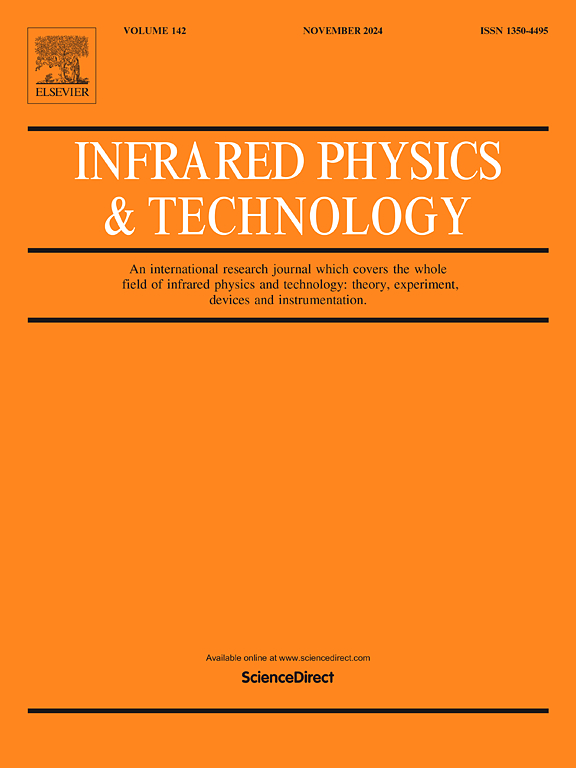Deep learning based spectral overlap separation for dual gases CO2/H2O detection with a 2004 nm laser source
IF 3.1
3区 物理与天体物理
Q2 INSTRUMENTS & INSTRUMENTATION
引用次数: 0
Abstract
Carbon dioxide (CO2) and water vapor (H2O) dual gas detection is realized within the same wavelength band by one laser source, giving low system complexity and high measurement accuracy. A neural network based on deep learning is developed to solve the cross-interference problem from the spectral overlap between CO2 and H2O molecules. Absorption-induced 2nd harmonic model is established by simulation based on the theory of wavelength modulation spectroscopy (WMS) and calibrated by experimental data, then the calibrated model is used to conveniently generate a large dataset for training and testing the neural network. Verified by experiments, excellent linearity of R2 1 is achieved between the predicted concentrations and the true values for both CO2 and H2O. The relative error is evaluated to be 0.3 % for CO2 and 0.9 % for H2O by measuring 15 groups of CO2/H2O mixture. This study is a successful combination of WMS and deep learning to provide both capabilities of high-sensitive detection and spectral overlap separation, giving a promising direction for simultaneous measurement of multi-gases.
求助全文
约1分钟内获得全文
求助全文
来源期刊
CiteScore
5.70
自引率
12.10%
发文量
400
审稿时长
67 days
期刊介绍:
The Journal covers the entire field of infrared physics and technology: theory, experiment, application, devices and instrumentation. Infrared'' is defined as covering the near, mid and far infrared (terahertz) regions from 0.75um (750nm) to 1mm (300GHz.) Submissions in the 300GHz to 100GHz region may be accepted at the editors discretion if their content is relevant to shorter wavelengths. Submissions must be primarily concerned with and directly relevant to this spectral region.
Its core topics can be summarized as the generation, propagation and detection, of infrared radiation; the associated optics, materials and devices; and its use in all fields of science, industry, engineering and medicine.
Infrared techniques occur in many different fields, notably spectroscopy and interferometry; material characterization and processing; atmospheric physics, astronomy and space research. Scientific aspects include lasers, quantum optics, quantum electronics, image processing and semiconductor physics. Some important applications are medical diagnostics and treatment, industrial inspection and environmental monitoring.

 求助内容:
求助内容: 应助结果提醒方式:
应助结果提醒方式:


